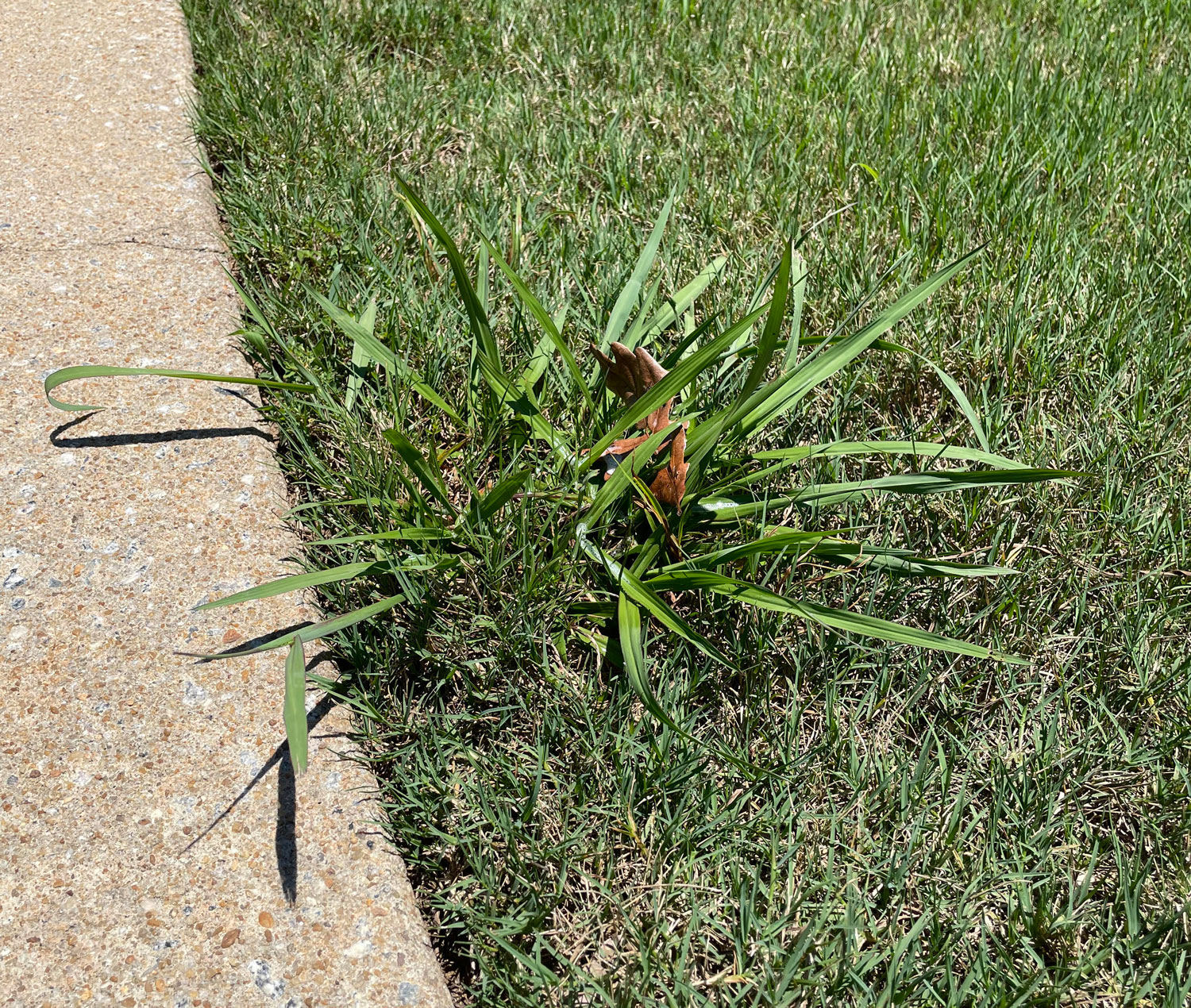Dallisgrass is a challenging weed with a coarse texture and vigorous growth potential that can create eyesores in fine-textured, warm-season grasses. Beyond its ability to quickly produce impressively large and unsightly seedheads, biological traits similar to our desired grasses make it a powerful adversary.
Identifying Dallisgrass
Before you can control it, however, you must first know how to spot it. Therefore, here are several identifying features of Dallisgrass:
- Dallisgrass has dull green, long, wide blades. They also feature a membranous ligule and sparse hairs at the collar.
- It has substantial mid-ribs. This is a great differentiator from other common grassy weeds like crabgrass.
- Dallisgrass has a bunch-type growth habit with spread potential and impressive height.
- The weed has long, vertical seed shoots comprised of a long stock and staggered, drooping, and black seedheads. These can be many feet tall in some cases.
- Accompanying smaller root fibers are short, thick, white/beige roots with defined rings known as rhizomes.
Why is Dallisgrass Difficult To Control?
Control strategies for Dallisgrass can be challenging. Generally, pre-emergent applications stop the root development of newly growing seeds, effectively controlling annuals (like Crabgrass) that start anew from seed each year.
While Dallisgrass seed is susceptible to pre-emergents, its perennial nature means spring regeneration from existing root systems. Those same energy-storing roots make it a challenge to control post-emergence as well. Even in cases where it is severely injured, it has the opportunity to regrow. With the use of appropriately labeled products and rates, we can suppress and potentially control Dallisgrass throughout a few growing seasons. However, more extreme measures are usually required to remove it quickly.
How To Control this Pesky Pest
First things first, it is important to maintain a thick, competitive lawn. The best defense is a great offense. Mow regularly, at a height appropriate for your turf species. This encourages root formation, increased energy production, and canopy density capable of shading the soil surface. Frequent mowing also limits seed production and dissemination.
You also will want to deliver appropriate amounts of water at ideal intervals, when possible. Moisture is fundamental to plant physiology. Managing it maximizes potential health more extreme and minimizes opportunities for decreased density related to a surplus or shortage of available water. Bermuda and Zoysia typically prefer an inch of water a week, delivered over three applications during the growing season. It’s important to watch your turf for signs of excessive or insufficient water.
Lastly, it’s always helpful to seek professional help. Team up with our team or partner capable of delivering a fertility and control program tailored for optimal turf health and weed control.
Selectively Remove the Existing Dallisgrass Plants
There are two primary methods to remove Dallisgrass: manual removal and weed-killing spray. Manual removal of Dallisgrass may be ideal, but care must be taken to remove it completely, including its roots. Replacing the displaced dirt with topsoil and light topdressing will give Bermudagrass and Zoysiagrass an ideal substrate to cover the spot created by eradication.
Another method is to spray the Dallisgrass with a non-selective weed killer available at your local hardware store. Caution is key, as these products will injure your turf. Focus your attention on the center of mass. The goal is to damage the weed, limiting damage to the surrounding turf. Reapplication will likely be necessary after a week, and repeated applications may be required.
Important Takeaways For Dallisgrass Control
Dallisgrass is an impressive and challenging weed. Therefore, the best defense is a solid offense. Maintaining a thick, healthy lawn from the start helps keep weeds out and heal once removed. However, manual removal or non-selective weed killers may be the best method for swift eradication of mature plants.
Lastly, we recommend creating a relationship with Nature’s Turf or your chosen provider to ensure proper mowing and watering practices are in place to avoid the weed altogether.








